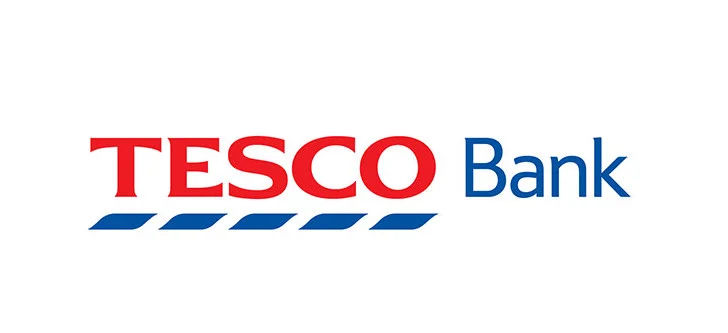Account Combo
/As is my goal with my passive investor reports, I want to use this to share more of my financial journey. I want to encourage smart saving but more importantly, open discussion. If I change my accounts during the month, I will update this post.
My financial decisions exactly that, my own. I base each decision on my own research. These are, by no means, recommendations. Before making any financial decision, you must do your own research and/or speak to a professional.
I have broken this down into categories. Saving, Spending and Investing. I will talk about each account in detail and explain my reasoning for opening/holding on to each account.
My Mentality
I’ve sometimes been asked the question, ‘how many bank accounts should I have?’ The answer. It depends.
If you have a smaller savings pot, you might be able to put all your money in one account that generates a large amount of interest. If your account only pays that interest on a limited balance, you might have to place the rest of your money elsewhere, in the next best account.
Basically, I want to ensure that every bit of money I have is in the right place to generate more of itself. Think of it like a champagne fountain. Once the top glass is filled (the best account), it pours into the next layer (the next best account) and so on.
I hold a portfolio of savings accounts, credit cards and investment accounts. I have also never been loyal to a bank. Loyalty does not pay in finance. In most cases, it costs you.
Banks love a loyal customer. They love them because they don't have to fight for their custom. Don't be loyal to your bank. Move your money if you see a better offer.
Saving
Skipton Lifetime ISA
I opened this account soon after it was launched in 2017. It was the only cash lifetime ISA (LISA) account available at the time. The Lifetime ISA (LISA) is a savings account you can open between the ages of 18 and 39. It is designed for saving towards a first home or to supplement retirement. You can currently put the amount towards any first home worth up to £450,000 in the UK. Currently I earn 1% (AER) on any balance. But the major advantage is the 25% government contribution bonus.
You can contribute a maximum of £4000 per tax year and you will receive 25% on top of that contribution, from the government. You will earn interest on the bonus amount as well.
25% Bonus On Tax Year Contributions (Max: £4000)
1% Interest (AER)
How I Use It:
The real advantage is the bonus, not the interest rate. So I deposit any LISA money towards the end of the tax year and keep it in a higher interest rate account until then. This was I still get the 25% contribution bonus but my savings will have been making more money elsewhere until that date.
Tesco Current Account
I have held this account since January 2018. There are two advantages to this account, which are in place until the 1st of April 2019. The main advantage account is the 3% (AER) interest rate on balances up to £3000. This is well above the average rate in the current climate.
The only caveat is that to get the interest, I need to pay in £750 per month and have 3 active direct debits from the account. To achieve the minimum pay-in, I shift the required money from the Post Office account every month. To hit the minimum number of direct debits, I use this account to pay off my Amex and Capital One balances in full every month, plus I have a monthly direct debit setup from the Post Office account to move over some savings.
Another bonus is that your Tesco debit card becomes your Tesco Clubcard. I receive 2 clubcard points for every £1 spent in Tesco (that's double the normal clubcard rate). I also receive 1 clubcard point per £8 spent outside of Tesco.
How I Use It:
When shopping at Tesco, I pay with this debit card to maximise the clubcard points. Outside of Tesco, I only use this card if the merchant does not accept Amex. The Amex Membership Rewards (MR) value is better and I receive 1 Amex point per £1 (rather than 1 clubcard point per £8).
In terms of the savings, I keep this account filled to the maximum before I deposit anything else in another account.
Marcus Online Savings Account
Introduced at the end of September 2018, the new Marcus account boasts a 1.5% interest rate (AER) on all savings up to £250,000. For an easy access online savings account, where you can deposit/withdraw as much as required, this is at the top of the table. This rate does include a 0.15% gross bonus interest rate for the first 12 months.
Like other easy access savings accounts, the interest is variable. According to the terms and conditions, if the rate is reduced, you must be notified 2 months in advance. If the rate is increased, you will be informed as soon as possible, after the rate is increased.
Another caveat is that you can only deposit/withdraw to/from a linked current account.
1.5% AER on Balances up to £250,000
Includes 0.15% Bonus for 1st year
Basic Online Savings Account
How I Use It:
I use this account for any extra savings that aren't in other accounts with higher interest.
Starling Bank is an app-based mobile only bank which was founded in 2014. I opened this account before a recent trip abroad because Starling Bank cards are one of the best travel cards you can get. Check out my full guide here.
Spending
American Express Rewards Credit Card
I have had an Amex card since 2017. The primary reason I got it was to start building my credit history to increase my credit score. I use it for all of my everyday spending. Amex is now accepted by a large number of retailers so it is rare that I can't use the card. But if I can't, I tend to use the Tesco debit card to gain some clubcard points.
I earned 10,000 bonus Amex MR points as a signup bonus but I also receive MR points as I spend (minimum 1 point per £1 spent). MR points can be used in multiple ways. You can convert them to other rewards schemes (eg. BA Avios), use them as statement credit (pay off some of your purchases). Converting to airline miles/hotel point schemes offers the best value (pounds per point-wise).
Received a 10,000 point sign up bonus
min. of 1 point per £1 spent
pay off in full every month
Current Limit: £3500
How I use It:
I use this card for my everyday spending. As a major plus, the Amex iPhone app has a wide range of features and is very easy to use. In order to keep on top of my spending, I receive a weekly notification with my account balance. But I also regularly check the account manually.
I pay off the balance in full, every month. I have a direct debit setup from the Tesco current account which does this automatically.
Starling Bank Personal Account - Travel
0.5% up to £2000
0.25% £2000-£85,000
Great Travel Card
How I Use It:
Although this account does offer a small amount of interest, I do not store money in it. Instead, I top up the account before or during a trip abroad.
The money is stored in the account in GBP and when I use it abroad, Starling does a fee-free exchange at the interbank mastercard foreign exchange rate.
If I need cash abroad, no problem. I can withdraw foreign currency using an ATM and there is no extra exchange fee on top. In my opinion, the best travel card you can get.
Capital One Credit Card
This was the first credit card I had. It is a very basic credit building card from Capital One. I applied for this card when I had little credit, just a phone contract here and there. The card served it's purpose, to increase my credit score.
Credit Builder Card
Pay off in full every month
Current Limit: £450
How I Use it:
I used to use this card for my everyday spending until I got the Amex card. Now I use it here and there for small purchases. I spend a little on it so I can keep the account open and active. I want to keep the account open so that I have access to more credit. Not to use it, but because having access to more credit can be a factor in credit-score building.
Investing
Vanguard Stocks and Shares ISA
This tax free investment account allows me to invest in Vanguard tracker index funds. The benefit of using a stocks and shares ISA is that I don't pay income tax on dividends or capital gains tax (CGT) when it comes to selling the investments held within. You can contribute to one stocks and shares ISA per tax year and the current tax year allowance is £20,000.
I track my Vanguard investments and publish the results through my passive investor report series.
Vanguard is famous for low cost passive investments which track the market (index funds). Whilst some mutual fund managers charge an annual fee of more than 1 or 2% of your portfolio value per year, Vanguard has an ongoing management fee of 0.15% + the ongoing fund charge of any fund selected. As an example, the Vanguard U.S. Equity Index Fund charges 0.10% per year (on top of the 0.15% management fee. So you would pay 0.25% of your portfolio value per year that you hold that fund in your ISA.
0.15% Annual Account Fee
From £500 lump sum or £100p/m
wide choice of funds
Great Online Interface
Withdraw When Required
Invest Up to £20,000 in 2019/20
Having a good online interface is important to me and Vanguard's doesn't disappoint. I can view a breakdown of my portfolio by geographical region, company, sector etc. Most investment platforms do offer this information but Vanguard makes it really easy to find and understand.
Log of Account Changes
May 2019: Closed Post Office Savings
March 2019: Opened Starling Personal
Sep 2018: Closed Nationwide FlexDirect - End of 5% Interest Period (12 months)
Conclusion
If I change my accounts or if I add another to the portfolio, I will update this post. If you would like to get regular updates remember to sign up to the Capital Matters mailing list.
If you liked this post, make sure to hit the like button down below. I would love to hear about your own account portfolios. Whether it’s 1 or 10+ accounts, let me know how you manage your savings in the comments section down below.











The best UK LEGO Deals and Promo Sets that you can get right now in April 2025 from a range of trusted online retailers. Updated daily.